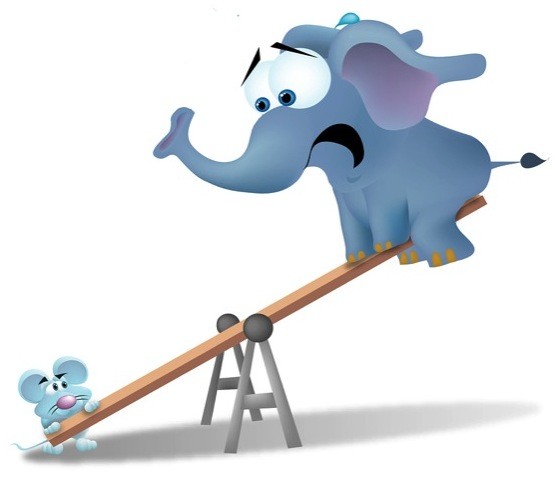BALANCE AND UNBALANCE FORCES
Balance forces
Balanced forces can be define as when the strength and direction of all
the forces acting on an object are equal.
This means the object doesn't changeits motion—it
stays still or continues moving at the same speed
and in the same direction.
USES OF BALANCE FORCE
-
Parked Car: A car parked on a flat road stays in place.
-
Constant Speed: A block moving at the same speed on a smooth surface.
-
Hanging Picture: A picture on a wall stays still.
-
Stable Bridge: A bridge holds steady under even weight.
-
Seated Person: A person sitting on a chair doesn't move.
-
Floating Boat: A boat stays level on water.
ADVANTATES OF BALANCE FORCE
-
Stability: Keeps objects stable and at rest, like a parked car.
-
Constant Speed: Keeps things moving at the same speed, good for machines.
-
Safety: Prevents sudden movements, reducing accident risks.
-
Predictability: Makes it easy to know how things will behave.
-
Energy Saving: Doesn't need extra energy to stay in balance.
DISADVANTATES OF BALANCE FORCE
-
No Speed Up: Can't make things go faster or start moving.
-
No Direction Change: Can't change direction or stop once moving.
-
Limited Use: Not useful for activities needing force changes, like driving.
-
Precise Setup: Needs careful balancing, which can be tricky.
-
Static Only: Only useful in situations where things are not changing or moving at a constant speed.
Un-Balance forces
Unbalanced forces can be define as when the strength or direction of the
forces acting on an object are not equal. This causes the object
to change its motion—it may speed up, slow down, or change direction
depending on which force is stronger.
USES OF UN-BALANCE FORCE
-
Car Accelerating: A car speeds up when you press the gas.
-
Car Braking: A car slows down when you press the brake.
-
Rolling Ball: A ball rolling down a hill speeds up.
-
Starting Movement: Pushing a sled makes it move.
-
Jumping: Jumping up applies force against the ground.
-
Rocket Launch: A rocket lifts off with strong upward force.
ADVANTATES OF UNBALANCE FORCE
-
Starts Movement: Gets things moving, like pushing a sled.
-
Speed Up: Makes things go faster, like a car accelerating.
-
Direction Change: Allows changing direction, useful in sports.
-
Stops Movement: Can slow down or stop things, like braking a car.
-
Versatile: Works in many situations, from sports to machinery.
DISADVANTATES OF UNBALANCE FORCE
-
Unstable: Can cause sudden, unpredictable movements.
-
Energy Use: Needs continuous energy, like fuel for a car.
-
More Wear: Causes more wear and tear on parts.
-
Harder to Control: More difficult to manage and control precisely.
-
Less Efficient: Not good for keeping things steady, resulting in more energy loss.
DIFFRENCES BETWEEN BALANCE AND UNBALANCE FORCE
| Balanced Forces |
Unbalanced Forces |
|
1. Balanced forces are equal in magnitude but opposite in direction, canceling each other out.
|
1. Unbalanced forces are not equal in magnitude and/or not opposite in direction.
|
| 2. Since the net force is zero, there is no acceleration according to Newton's first law of motion. |
2. The object will accelerate in the direction of the resultant force according to Newton's second law of motion (F = ma). |
| 3. The object is in a state of equilibrium, meaning it is either stationary or moving with a constant speed in a straight line. |
3. This can result in the object starting to move, stopping, changing direction, or changing speed. |


